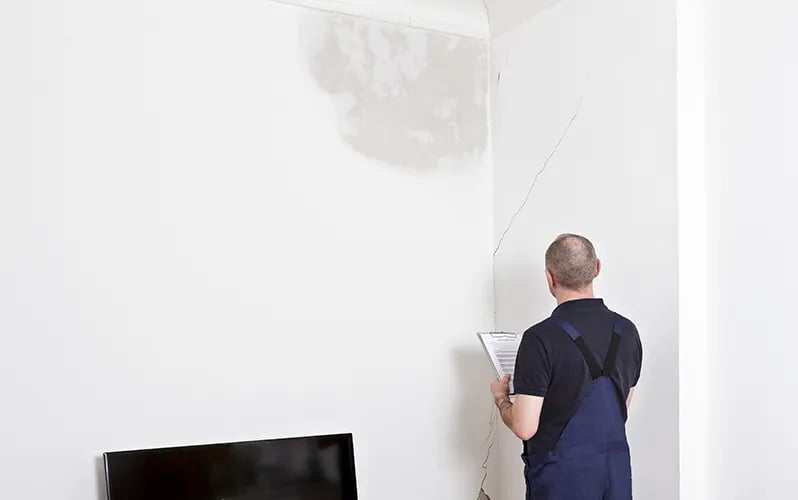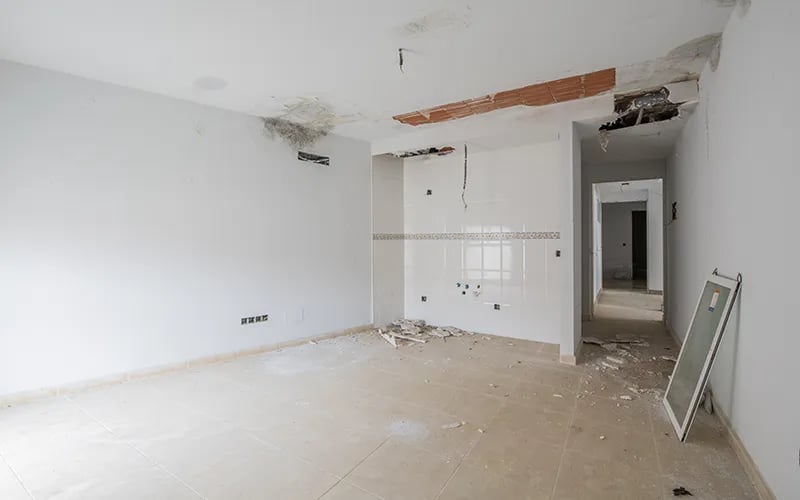Water leaks are a hot topic
As you can imagine, we talk to a lot of commercial real estate owner-operators about water leaks - and a lot of facilities managers on the very same subject. A pervasive theme in our discussions is the acceptance that water leaks will happen - which we also hold to be true. Water leak detection solutions aren’t about elimination, after all - instead, their focus should on speedy detection of the first signs of leaks.
We’ve also learned a lot about the different ways that the general acceptance that leaks will happen, plays out - both for facilities managers, as well as in the C-suite. Few facilities managers have sufficient budget to make wholesale changes to their water leak detection setup without executive buy-in; and with pressure on optimizing operational efficiency while struggling to retain trained staff, most budgets are already stretched.
Moving from a reactive to proactive approach is mission-critical
The question isn’t whether facilities managers are dealing with water leaks to the best of their ability already - they are. It’s whether they’re in a position to move from a reactive playbook to something more proactive that champions addressing leak detection at an earlier stage.
For commercial building owners and operators, this shift will cause a tangible difference in preservation of the asset, as well as the health of the bottom line.

Some key stats on water leaks in commercial buildings
We undertook a study to better understand the frequency and impact of water leaks in commercially owned and operated buildings. Our key findings include:
-
Each building experiences an average of 2 water leaks every month.
-
Each water leak has an average repair bill of US$1,973 (or £1,563).
-
Leaks are most common in:
-
Bathrooms (36%)
-
General plumbing and infrastructure (23%)
-
Kitchens & laundry areas (21%)
-
Dealing with a leak takes anything from 2 hours to a day for 45% of leaks - but approximately 9% of leaks take an entire week to deal with.

Water leak detection challenges facing facilities managers
1. The majority of facilities don’t have a formal water leak management plan
In our study, over 54% of respondents reported that they didn’t have a formal water leak management plan for all the buildings that they managed.
We’re not surprised by this number: most facilities managers are incredibly busy with the day-to-day management of running buildings, and can find it hard to find the time for the necessary paperwork. And with trained staff scarcer than ever before, they’re more pressed for time than ever before.
But without a plan, it puts facilities managers in reactive mode. They’re spending more time responding to leaks once they’re larger and have caused more damage; rather than applying the principles of predictive maintenance and picking up on leaks early, when they’re smaller and have caused less catastrophic damage.
2. There’s a heavy reliance on a quickly-diminishing workforce
The labor pool of trained and experienced facilities management specialists is diminishing. A learned distrust of technology (of which, more below) means has led to heavy reliance on manual inspections as a water leak detection solution.
But with a dwindling workforce expected to cover as many - if not more - square feet, few facilities teams have sufficient experienced staff with the bandwidth to undertake scheduled inspections with any regularity. And for the 41% of buildings that only detect water leaks through manual inspections, this presents huge risk.
3. Technology adoption is slow, for good reason
Technology is a logical answer to mitigating the risk of water leaks, and many of the facilities managers we’ve spoken to have already put at least one water leak detection technology through its paces. But over 60% of respondents in our study don’t currently use any technological solutions.
Why? Feedback we've received is that trust levels are low. Vendors have over-promised - and ultimately, under-delivered when it came to impact. Facilities managers who have tried 2 or 3 solutions already are understandably reluctant to invest the time and energy into putting yet another technology through its paces.
High costs don’t help the case for new tech either. When you take a broad view of costs - including solution purchase, installation, downtime and labor - you’re talking 5- to 6-figure numbers just to try to test whether something might work. When the C-suite is looking for optimized maintenance costs and quick time-to-ROI, it’s tough to make a business case that stacks up.

Overcoming challenges to proactive water leak detection
We believe there are 3 key avenues of support that will move water leak detection from reactive to proactive:
1. Recognition that the old model is dying out - and openness to new solutions
Manually-led water leak detection is on its last legs - literally. Facilities managers need to face facts: manual inspections are labor-intensive, not cost effective, and nearly impossible to perform given the lack of trained staff. It’s time to seek a better set of solutions.
And that better set of solutions shouldn’t just be contained to what’s well-known, particularly as most of them focus on detecting leaks that are already larger. Facilities managers need to look at newer technologies, including those that detect leaks at an earlier stage.
2. Water leak detection solution vendor transparency
Vendors of water leak detection solutions need to be honest and transparent with owner-operators and facilities managers about the capabilities and suitable use cases for their technologies. Over 33% of facilities managers employ multiple solutions; if a technology isn’t a good fit for a specific use case, it doesn’t mean it might not suit elsewhere in a facility.
Vendors also need to be transparent about pricing, including the cost of installation, which can easily run into 5 figure sums for moderately sized projects.
And finally, vendors should be prepared to help their prospective customers to prepare a business case and/ or calculate potential ROI for the water leak detection solution.
3. C-level engagement and support
It’s critical that the C-suite don’t shy away from engaging with proactive water leak detection. It’s easy to simply accept the status quo, taking the attitude that “leaks happen, and we’ll claim the big ones on insurance”. But that kind of laziness will negatively impact the bottom line.
Engaging in and providing support for a strategic approach to water leak detection is a worthy time investment that will enhance operational efficiency, and ultimately lead to a healthier balance sheet.
Ready to take the next steps towards early water leak detection?
We'd love to help! Book a discovery call with our team.